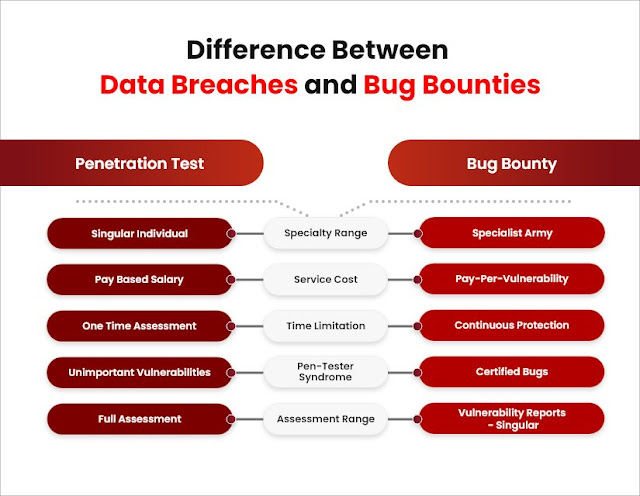An organization runs with the help of various small third-party companies, also known as vendors. The organization may, on its need, be outsourcing its work to legal advisors’ agencies, management bodies, private security companies, etc. This would mean the company’s sensitive information would be handed to the vendors to work on. If the third-party experiences data breaches, this would only put your data at risk. As a solution, we see organizations adopting third-party risk management programs to oversee all aspects of secure onboarding of third parties and all forms of risk mitigation associated with the vendor.
Read More: EC-Council Certified Encryption Specialist (ECES)
An organization using a third-party is quite common as not all organizations have the ability to create their own software. Occasionally, they will also outsource an amount of work to a vendor, should the need arise. Third-party makes it easy for an organization to focus on the vital work and distribute the unnecessary load. This helps increase productivity and efficiency of work for the organization. However, this also entails the risk associated with the third-party vendors. Let us find out more about this in the blog.
What Is Third-Party Risk Management?
Third-party risk management (TPRM) is a term used to refer to the act of scanning, obtaining information, and controlling the risk associated with third-party vendors and service providers. A Chief Information Security Officer (CISO), coordinating the third-party risk management program, is responsible for identifying all the vulnerabilities with the vendor, examining the severity of the vulnerability, and mitigating the risk early on to avoid future trouble.
The motive behind implanting third-party vendor risk management is to mitigate any possibility of data breach risk, business disruption, and unethical actions taken by a third-party vendor, which could result in the downfall of business operations. When only 16% of the organizations effectively mitigate third-party vendor risk, there is a need for TPRM.
What Is Third-Party Risk Assessment?
Third-party risk assessment means examining every risk associated with the third-party vendor. The objective is to learn of all the loopholes that the third-party might bring to the organization. If this goes unchecked, there is a high chance that hackers will target third-party vendors to gain access to the organization’s sensitive information. This could mean business disruption and loss of profit. Data breaches could also severely affect the organization’s reputation in the market.
Various risks to look for are operational risk, security risk, business failure, and reputation risk. These risks are identified by the CISO of the organization.
The steps involved in the third-party risk assessment process are:
◉ Recognize and find all the risks that could result through association with the third-party.
◉ Analyze the vendor’s level of access to your network, data, and systems. This would determine the severity of risk with each third-party.
◉ Review service level agreements (SLAs) to ensure the third-party performs within its provided guidelines.
◉ Examine and solve the risk associated with individual vendors to your organization according to the importance of sensitive data each vendor holds.
◉ Constantly monitor for risk and stay up-to-date with the new industry standards of handling risk and the new vulnerability that vendors pose.
Types of Third-Party Risks
It is essential to know the type of risk associated with vendors to the organization. Here are few third-party dangers to be aware of while associating with a vendor.
◉ Reputational Risk: Your reputation depends on the person you associate with. For example, the vendor’s negligence to maintain its reputation could result in an attack toward its associates and the call to boycott its products.
◉ Operational Risk: The risk associated with failed procedure and system could result in business disruption. This presents a high risk in matters of high-profile failure of vendors.
◉ Transactional Risk: Security lapses in the transaction may result in unauthorized access, misuse of data, sharing of sensitive information of the company to the vendors. Hackers could exploit this sensitive information.
◉ Strategic Risk: The risk of a failed business decision by vendors may reflect on the organization’s worth. A wrong decision by the vendor diminishing the company’s worth is fatal.
◉ Legal Risk: Regulation violation by the vendor could cost legal expenses or even lawsuits to the organization.
Why Is TPRM Important?
Third-party risk management (TPRM) is essential to reduce unnecessary risks and costs associated with third-party cyber threats. Third parties present a variety of cybersecurity threats that must be evaluated and mitigated. A wide range of other aspects, such as ethical business practices, corruption, environmental impact, and security procedures, are covered by third-party risk management.
The operations of third parties can directly affect the company’s reputation. Third-party management is more than just monitoring for cybersecurity flaws and offering third-party enforcement advisory services. Third-party risk management also helps make the merging and acquisition of other companies risk-free and ensures smooth execution of the deal.
Third-Party Risk Management Framework
Businesses need to have a well-developed third-party risk management policy covering all levels of risk and all phases of a third-party lifecycle, from initial risk assessment to business continuity. The risk assessment should be part of organizational controls and should include the supply chain and other risk assessments by external parties. Establishing a third-party risk management framework, regardless of its risk profile, is an essential part of internal audit and risk reduction.
As companies become more decentralized, consistent third-party governance structures are becoming more important. In many organizations, particularly those operating in controlled environments, the third-party risk is a topic on board agendas.
Challenges of TPRM
1. Less visibility: Today’s third-party environments are so large and diverse that it’s difficult to define and manage relevant protection, access, enforcement, and resiliency risks.
2. Regulatory responsibility: Companies are under increased pressure to handle third-party threats due to global regulations.
3. Digital expansion: As organizations expand their third-party communities virtually, cybercriminals look for vulnerabilities in these communities.
4. Evaluation: Update third-party arrangements with data protection and confidentiality provisions taken into account.
5. Protection: Link your third parties to the standards of your organization. It should be an essential onboarding element for a new supplier.
6. Investment: Organizations should consider third parties and invest in them by offering management, culture, risk, and information security to third parties.
7. Communication: Being in constant contact with your third parties and proactively resolving their issues would go a long way toward establishing and retaining confidence in these difficult times.
Five Steps to Mitigate Third-Party Risk
We should always ensure a vendor presents minimal risk to the organization. Five steps to ensure third-party risk are adequately mitigated are:
1. The organization should hire an expert, i.e., a CISO, and establish a vendor management program to ensure proper assessment of the risk involved with the third-party in periodic intervals.
2. The next step involves ranking vendors according to the level of risk they pose to the organization. Organizations should conduct an industry-decided examination to assess the level of severity involved with the third-party. Decisions and rules imposed by the third-party vendors should be in line with the organization’s interests.
3. Proper monitoring of third-party tools and apps requires that third-party tools meet the industry standard and there is no risk of business disruption presented to the company. It is crucial to check the third-party vendors and agencies appropriately to mitigate any future business disruption risk.
4. The smallest links that the hacker could exploit should be checked for any faults, i.e., end-point security. There should be proper end-point security products to monitor network usage and mitigate any risk associated with the end-user.
The expert should stay up-to-date and ready to fight any new vulnerability associated with the vendors. Third-party tools providing intelligence about the current vulnerabilities like National Vulnerability Database should be used to stay up-to-date to fight possibilities of risk.
Source: eccouncil.org




























